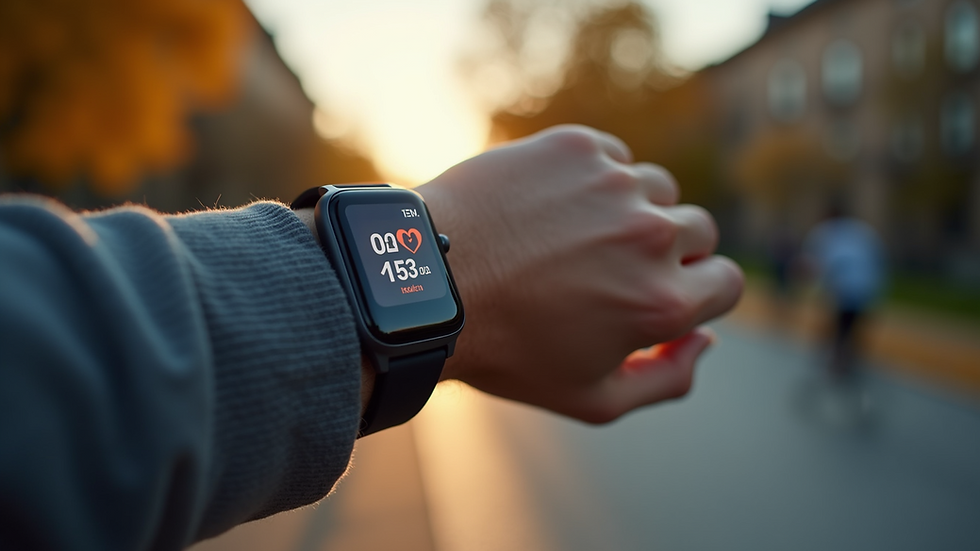Exploring Cutting-Edge Medical Care: Innovations That Are Transforming Healthcare
- Ivan Leavchankp

- Jul 26
- 4 min read
The healthcare landscape is constantly evolving, thanks to the emergence of innovative technologies and practices aimed at improving patient care. From telemedicine to wearable devices, today's healthcare solutions are tailored to meet the unique needs of individuals. This blog post explores how these advanced healthcare solutions are revolutionizing patient care and enhancing overall health outcomes.
Cutting-Edge Medical Care: The New Frontier
Cutting-edge medical care refers to the latest advancements in technology and practices that enhance the diagnosis, treatment, and management of health conditions. One of the most significant developments in this area is the rise of telemedicine. During the COVID-19 pandemic, telehealth services surged, providing patients with convenient access to healthcare from their homes. Studies show that telemedicine can reduce hospital readmission rates by up to 30% and improve patient satisfaction.

Another example of cutting-edge medical care is the utilization of artificial intelligence (AI) in diagnostic procedures. AI algorithms can analyze medical imaging with remarkable accuracy. For instance, a recent study demonstrated that AI could identify breast cancer in mammograms with 94% accuracy—higher than the 88% accuracy of human radiologists. This technology not only accelerates the diagnostic process but also minimizes the risk of human error, ultimately leading to better patient outcomes.
Wearable Technology: Tracking Health Metrics
Wearable technology has been a game-changer in the healthcare sphere, empowering patients to take charge of their wellbeing. Devices like smartwatches and fitness trackers monitor various health metrics, such as heart rate, blood pressure, and physical activity levels. This data can provide insights into a patient's health status and alert them to potential issues before they escalate.
In 2020, a survey revealed that over 30% of Americans owned a fitness tracker. This trend indicates that people are becoming more proactive about their health. Additionally, these wearables allow healthcare providers to collect real-time data about their patients, facilitating timely interventions if necessary.

However, it's essential to note that while wearable technology can help track health metrics, relying solely on these devices without professional guidance can be misleading. Patients should always seek advice from healthcare professionals regarding any concerning data their devices may reveal.
The Role of Data Analytics in Personalized Medicine
Data analytics is transforming healthcare by enabling personalized treatment approaches tailored to individual patient needs. By analyzing large datasets gathered from various healthcare sources, providers can identify patterns and trends that can guide treatment strategies.
For example, precision medicine uses genomic data to tailor therapies based on a patient's genetic makeup. According to the National Cancer Institute, this approach has led to significant advancements in cancer treatment, with targeted therapies showing higher efficacy rates compared to traditional methods.
Moreover, predictive analytics tools can assess a patient’s risk of developing chronic diseases, allowing for early interventions. A 2019 study found that using data models to predict diabetes risk could decrease the incidence of the disease by nearly 30% through proactive lifestyle changes and medical interventions.
Telehealth and Its Impact on Rural Healthcare
Telehealth has proven to be particularly advantageous in rural healthcare settings, where access to medical facilities can be limited. By incorporating advanced healthcare technologies, patients in remote areas can receive timely interventions, consultations, and follow-ups without having to travel long distances.
According to the American Hospital Association, rural hospitals have adopted telehealth tools to increase patient engagement and reduce healthcare costs. For instance, a rural hospital in Minnesota implemented teletherapy services that led to a 40% increase in mental health consultations during its first year. This statistic demonstrates how telehealth can effectively address the healthcare accessibility challenges faced by rural populations.

Strengthening Patient Engagement Through Mobile Apps
Mobile health apps are another facet of advanced healthcare solutions that facilitate patient engagement. These applications allow individuals to track their health, medication schedules, and appointment reminders, fostering a sense of empowerment regarding their medical care.
Recent data indicates that the global mHealth app market is expected to reach $236 billion by 2026. Apps like MyFitnessPal and Medisafe are making it easier for patients to manage chronic conditions by offering features such as medication reminders and dietary tracking. Engaging patients through technology has also been shown to improve adherence to treatment plans, ultimately leading to better health outcomes.
Incorporating mobile health apps into patient care not only promotes responsibility but also enhances communication between patients and healthcare providers. With the right tools, providers can monitor their patients' progress and make data-driven decisions to optimize care.
The Future of Healthcare: What Lies Ahead
As we look to the future, it's clear that advanced healthcare solutions will continue to shape the medical landscape. Innovations in technology, such as blockchain for secure data storage and virtual reality for training medical professionals, are just the tip of the iceberg.
Moreover, collaboration among healthcare providers, technology companies, and patients will be crucial for the successful implementation of these cutting-edge medical solutions. Establishing standardized practices and ensuring data security will be vital for patient trust and the overall success of these innovations.
One promising development is the integration of artificial intelligence and machine learning into healthcare management systems. These technologies can streamline operations, forecast patient needs, and adjust care courses dynamically, ensuring that healthcare systems remain responsive to changing demands.
Furthermore, as more people embrace self-care and health management, the demand for personalized, patient-centered care will grow. This shift will require ongoing research and adaptation of existing healthcare models to incorporate emerging technologies more effectively.
In conclusion, the realm of healthcare is experiencing a renaissance powered by innovative solutions that enhance patient care, accessibility, and engagement. From telemedicine to wearable technology and data analytics, these advancements are paving the way for a healthier future. As we embrace these changes, let’s remember that the ultimate goal is to improve the quality of care for patients everywhere. To learn more about the ways in which you can take a proactive approach to your health, explore more on innovative healthcare solutions.




Comments